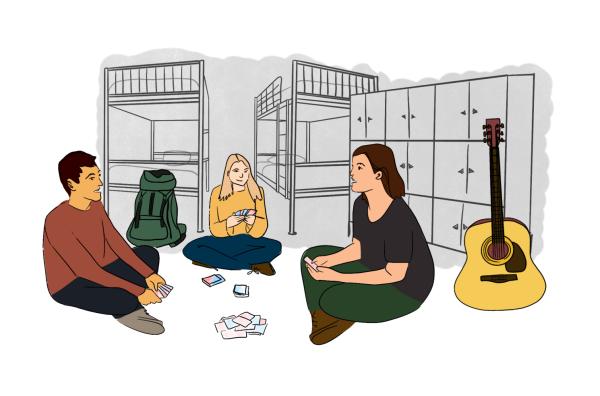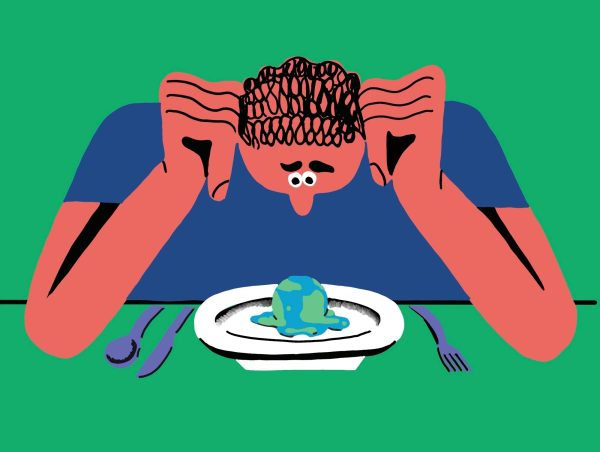Alumni Column: Skipping Class – Socioeconomic Status At Colgate
I have read with great interest in recent months about Colgate’s Campus Climate survey and the resultant conversations it is sparking on campus. Subsequent opinions in the Maroon-News have spoken to some of the fissures in campus life as related to Greek life and gender, complexities and challenges I recall from my own experience as a first-generation college student trying to fit in at Colgate.
While there are many important conclusions in the study that deserve reflection and response, I find myself pondering a specific, yet ill-defined dynamic underpinning many of the characteristics studied: the subject of class.
A summary of findings from the campus climate survey found, perhaps unsurprisingly, that affluent students (who tend to be white) enjoy their Colgate experience more than low-income students (who tend to be people of color). This dynamic is strikingly familiar to me as my sense of self was powerfully shaped by an emerging consciousness of my socioeconomic class background while attending Colgate. As a student, I had great fun, made lifelong friends and eventually found my social niche, but I also felt powerful moments of isolation and classism.
Rarely did people explicitly put me down for having to work nearly 20 hours a week, or not having a car or a North Face jacket. But I myself felt out of place at the visual effect of money, the opportunities I never knew because my single-parent mom was doing all she could to pay a modest tuition bill aided by substantial financial aid. I suspect that my experiences might resonate with any number of low-income students today but I am unsure of what opportunities exist to make sense of this reality, support low-income students and foster meaningful cross-class conversations.
Today, I proudly and thankfully write this reflection as a new father, a husband, a homeowner and gainfully employed administrator at another elite university. I am an older, hopefully wiser and more mature person who keenly appreciates my good fortune and the privileged opportunities that emerged from climbing the social ladder.
I have achieved a slice of the American Dream and I owe it in large part to Colgate. However, the discussion around campus climate reminds me what I found uncomfortable in my Colgate experience and what still haunts me as I have moved from a lower to middle social class status.
As scholar Felice Yeskel notes, “Classism, like other forms of oppression, can be internalized causing self-blame, shame, low expectations, discouragement and self-doubt, particularly about one’s intelligence.”
Since arriving on campus, I have been socialized around a set of norms, culture and values different from my family upbringing, and my identity today rests in two worlds which I uneasily negotiate in a tolerant co-existence. When factors such as socioeconomic background predict widely divergent satisfaction in the Colgate experience, I think it challenges our values, social fabric and, as President Roelofs has suggested, is “a threat to real intellectual community.”
There are bigger implications for class divide than assessing how different people enjoy Colgate. Professor Joel Kotkin, speaking on NPR about his new book, ‘The Next Hundred Million,” stated that the biggest challenge he sees in the next 40 years of population growth is dealing with the challenges of class and decreasing social mobility.
The current recession has exacerbated a growing income gap where the fortunate, wealthy few secure a good education, retain jobs and earn a higher income while a growing number of citizens are poor, and a disproportionate number of the poor are minorities who are fast becoming a majority.
I wonder what the implications are for Colgate and its students, if we continue to be an institution that predominantly attracts white students and those from upper socioeconomic backgrounds. While Colgate is different from the school I attended 10 years ago, the hidden cloak of class still pervades. Moreover, the number of low-income students at Colgate remains low, while 65 percent of students come from families that pay the full cost of attendance.
Working in admissions, I appreciate the challenges of attracting a diverse student body, but I also constantly read reports detailing how more high school grads will be people of color and will come from less privileged socioeconomic background. While not every, or even many, of these students will meet the high standards for admission, I want those kids to know about Colgate, have an opportunity to attend if admitted and want to come to Colgate for the transformative impact it can have.
Despite its flaws, I love Colgate both for what it is and what it can be. Laudably, Colgate aspires to graduate not just students but global citizens ready to engage the world.
Partly, this means creating the conditions on campus that will provide a supportive and nurturing environment for all students, regardless of race, gender, sexual orientation, religion or even class. Partly, this means recruiting a class of students that reflects the larger society we will enter and preparing students to navigate that society.
The inequities and stratifications at Colgate should be important to students and alumni alike, for the quality of our education and shared experience and for the vitality of our democratic society. While I lament the conversations I didn’t have as a student and the hard lessons I learned about my class identity, I think alumni like me have a responsibility to engage in this dialogue. The stakes are high, and the conversation should start now.









